The world of noir (and crime) has largely seen women fall into two broad categories. One, a predictable stereotype of the home-loving girl next door who retains her dog like devotion for her man. She is associated with the home and offers her man true love, understanding and nurturing. In short, the ideal, nice woman.
The other breed of woman is the femme fatale. She is the key figure who lures/tempts/seduces the man into crime. She is exciting, intelligent, calculating, manipulative, cruel and uses her sexual attractions blatantly and without regard for the polite conventions of the past. She knows what she wants and doesn’t care what she has to do to get it. She realizes she has an ace up her sleeve: her body and she seeks to advance herself by manipulating her sexual allure and controlling its value, particularly when the chips are down for her.
The femme fatale is a character that is feared yet at the same time fascinating. The man frequently agonizes about whether or not she can be trusted. In fact, the portrayal of the femme fatale underlines the existential outlook of the male protagonist. Her characterization contributes to the instability and uncertainty of his nourish world.
The femme fatale represents a particular elaboration of the sexual woman, one in which she has the upper hand in the relationship. She can drive the man to commit murder for her and her power over the man is such that he has less than even chances of surviving this spider-woman. And even if he does, he often ends up a broken man. In fact, the femme fatale in crime is comparable to the villain in nineteenth century melodrama. It is she who gets the plot moving and gives the noir narrative its zing. Consequently the femme fatales have rich and varied shades to them and are infinitely more interesting and superior characters to the uni-dimensional goody-two-shoes women.
Today we look at five of the most fascinating femme fatales from the golden age of film noir, the 1940s.
Brigid O’Shaughnessy (The Maltese Falcon (1941))
Mary Astor played the scheming O’Shaughnessy, who kills private eye Sam Spade’s partner Archer to implicate her unwanted accomplice, to perfection in John Huston’s cracker of a thriller based on the novel by Dashiell Hammett. An early deceitful, calculating beauty, she is a skillful and dangerous liar, who ultimately gets her comeuppance when Sam Spade retains his integrity, even as she continues to try and apply her charm on him to wiggle out of her situation, and hands her over to the police.
Phyllis Dietrichson (Double Indemnity (1944))
Arguably the greatest film noir ever, this Billy Wilder masterpiece has one hell of a screenplay co-authored by Wilder and Raymond Chandler, brilliantly taking off from James M Cain’s novel of the same name. At the heart of the film is Barbara Stanwyck in her most famous role as the blonde floozy, who drives insurance agent Walter Neff (Fred MacMurray) into murdering her husband for money. Stanwyck’s steely and hard-boiled performance took America by storm giving her career a new lease of life as the perfect cold-blooded noir heroine.
Katherine ‘Kitty’ March (Scarlet Street (1945))
Fritz Lang gave Joan Bennet three of her most famous roles in his noir trilogy with her, The Woman In The Window (1944), Scarlet Street and Secret Beyond The Door (1947). Her strongest role of the three was undoubtedly in Scarlet Street as the femme fatale who makes the good middle-aged Edward G Robinson stray from his normal humdrum life. An aspiring amateur painter, as he gets deeper and deeper involved with Kitty, his humiliation is complete when she asks him to paint her and makes him paint her toe nails!
Kitty Collins (The Killers (1946))
Ava Gardner’s career kickstarted with her searing portrayal of the double crossing dame who plays the hero (Burt Lancaster) to get the loot. The film itself takes off from Ernest Hemingway’s short story of the same name and expands it beautifully into one of the all-time great noir flicks. Reviewing the film at the time of its release, while New York film critic, Bosley Crowther, praised Gardner for being suitably sultry and sardonic, Scott Tobias reviewing the film at its DVD release, found her to be ‘a memorably sultry and duplicitous femme fatale!’ One couldn’t agree more.
Kathie Moffat (Out Of The Past (1947))
And finally, a close second to Stanwyck in Double Indemnity would be Jane Greer in this Jacques Tourneur classic noir tale, based on Geoffrey Holmes’ novel, Build My Gallows High. Greer is a suitably charming yet deadly baby-faced spider woman, who has hero and private eye Robert Mitchum ensnared in her web, leading him (and finally herself) to his doom.


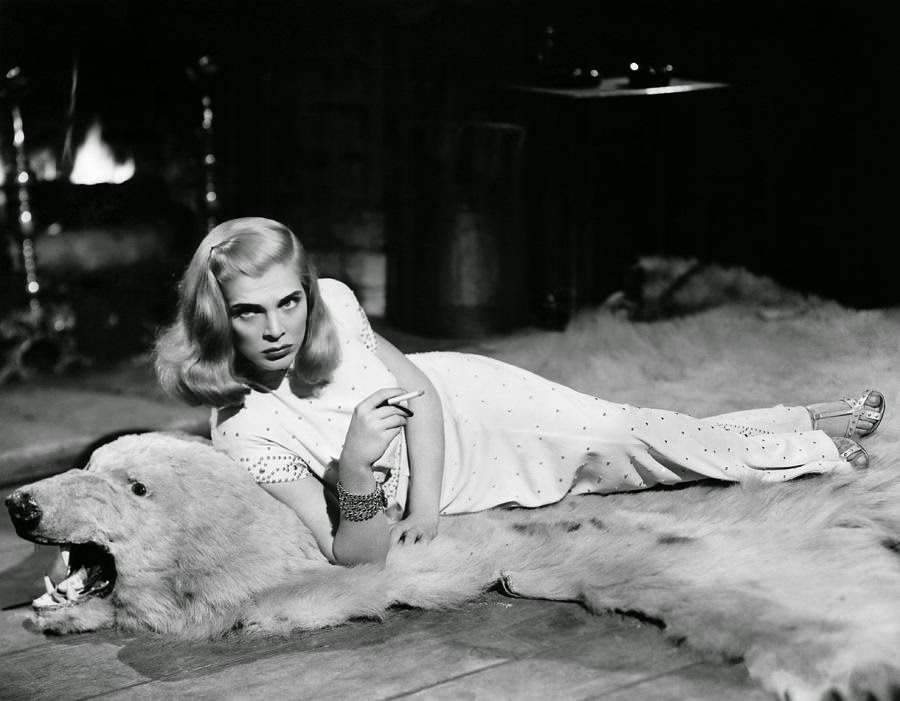
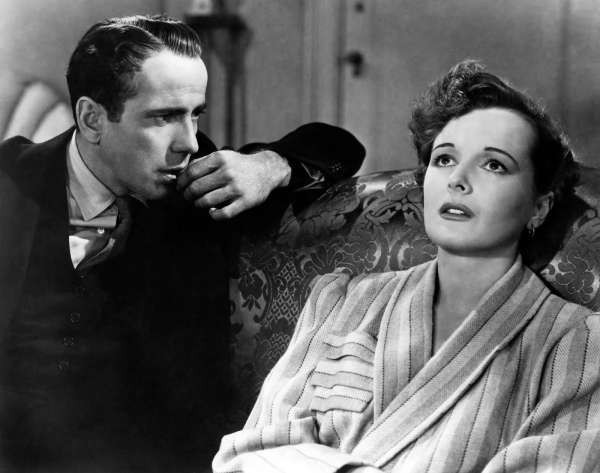
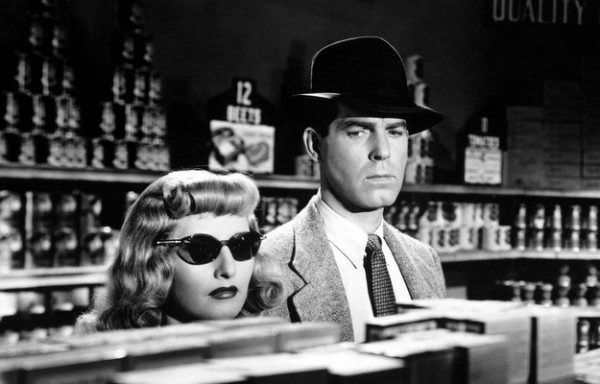
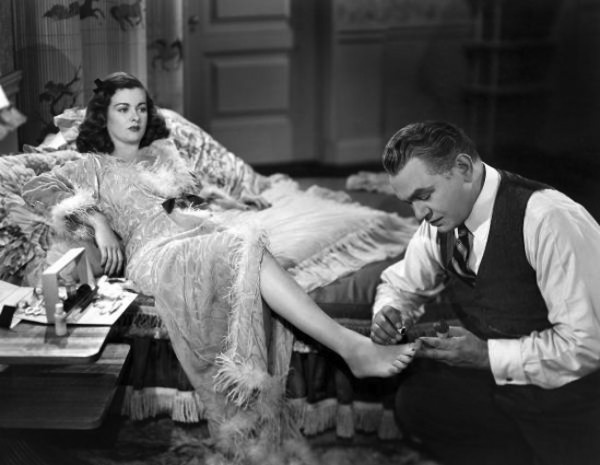
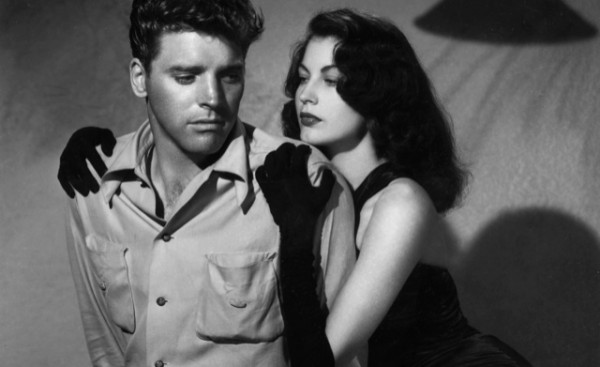
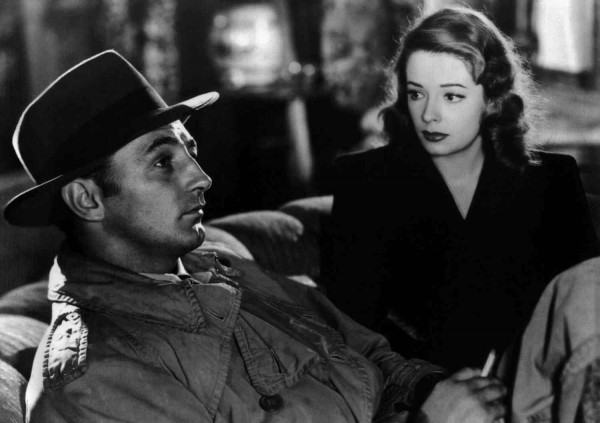
There is an interesting take on the domineering presence of Femme Fatales in Film Noir which is traced to rampant anti-Semitism in Europe which prevailed for centuries. Jewish men were stereotyped as weaklings – passive and feminine, debarred from military services and relegated to middle-class occupations, while Jewish women were stereotyped as domineering wives or seductresses. The Jews internalized this gender codification, thrust upon them by the Gentiles, and this was reflected in the films that constituted the Noir cycle, because most of the filmmakers who were responsible for these films were German-Jewish emigres who started their careers during the Weimer Republic in Germany in the 20s and fled Germany and Austria during the rise of Nazism in the 30s and reached Hollywood after a brief professional stopover in Paris. Fritz Lang, Robert Siodmak, Billy Wilder and his lesser known younger brother Willy Wilder, Otto Preminger, Edgar Ulmer, Curtis Bernhardt, Max Ophuls, Fred Zinnemann and others, knowingly or unknowingly incorporated this phenomenon when it came to the portrayal of female characters; it’s also reflected in their portrayal of the male characters who were mostly effeminate, cerebral and vulnerable middle-class men who fell for the temptations of assertive and sexually assured femme fatales. They were ‘soft-boiled’ as opposed to the ‘hard-boiled’ male protagonists of the American directors. And the funniest part of the story is this that none of these Jewish directors were believers; all of them grew up in secular environments and disliked their Eastern brethren – Ostjuden as they were called – Jews who lived in ghettos and were engaged in trades and hardcore businesses. Fritz Lang in fact denied his Jewish background all his life. It’s the Ostjudens or Eastern Jews who incidentally became studio owners in Hollywood and were prejudiced against their intellectually inclined Western counterparts – Westjudens, who migrated for political reasons. Billy Wilder once remarked, “We fled from Adolf Hitler to Adolf Zukor (head of Paramount Pictures).”
Woah, that’s quite a heavy take, but as you said, an interesting one. Never really thought about it that way. But I have to say, as a movie watcher, love the hard-boiled dames! 🙂